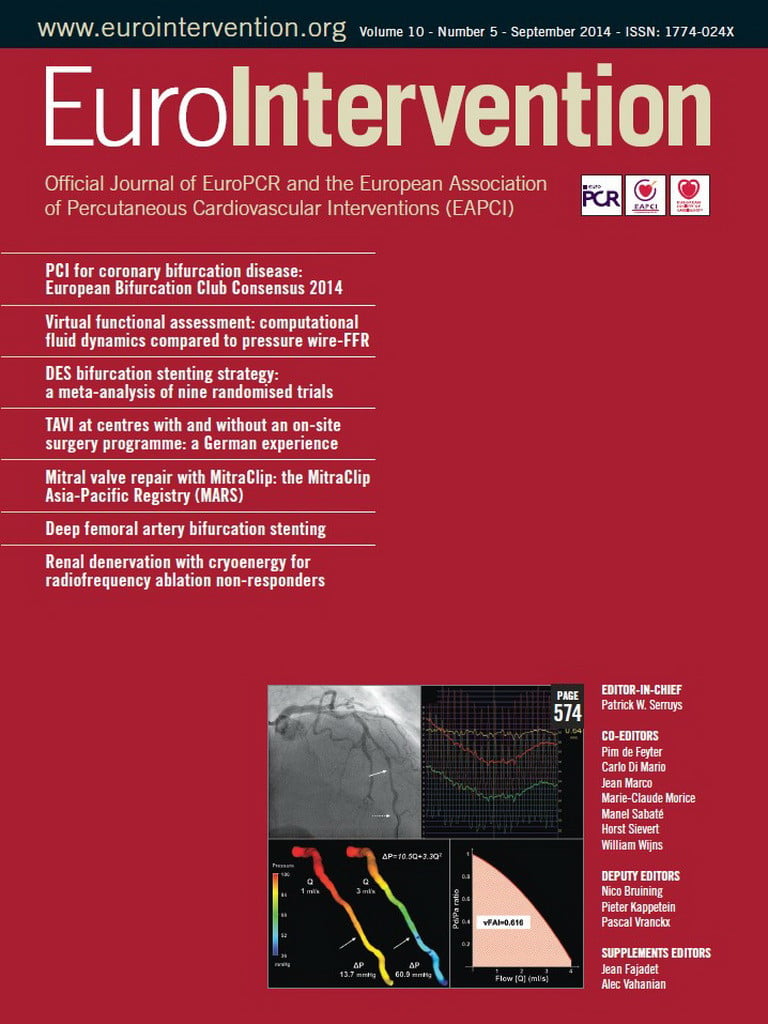While many of the 125 journal editors within the category “cardiac & cardiovascular systems” were on summer holidays in July, we are sure a great majority of them could not resist the urge to open their laptops or tablets for this year’s release of Thomson Reuters’ Journal Citation Reports®. For EuroIntervention, we were truly delighted to learn that our journal’s impact factor has jumped to 3.785, an increase of 0.585 from last year’s impact factor (Table 1).

This increase pushed our ranking up to 33rd position among the now 125 journals within our category. However, there is one little anomaly in the list of the 125 journals. One of our ESC sister journals is listed twice. The European Journal of Cardiovascular Prevention & Rehabilitation became the European Journal of Preventive Cardiology in January 2012 and both titles are listed. Why is this important? If we take into account that the list of journals should be 124, this would mean that EuroIntervention moves up to the 32nd position and on the very edge of the top 25% of journals (31st position and higher) within our category! We understand that submissions today to journals within the top 25% of their category are becoming more the rule than the exception with respect to university submission policy for authors, with certain cases where the degree of funding and/or grant awarded is related to the volume of accepted papers in these top 25% tiered journals.
The challenge for us today is to sustain the growth in our impact factor and, indirectly, our ranking. This year alone three new cardiovascular publications joined the category and many more are expected. In fact, next year will see the launch of the “European Heart Journal - Cardiovascular Pharmacotherapy” and the “European Heart Journal: Clinical Outcomes & Quality of Care” to complement further the ESC journal family. Furthermore, discussions are ongoing within the ESC to launch two open access journals.
It is in this increasingly complex environment that the benefits of the ESC journal family are best illustrated, especially in relation to our joint publications at ESC in 2014. These joint publications, either guidelines or consensus documents are not only of great interest to the specialist in their day-to-day practice, but they are a valuable source of citations for a journal, critical in maintaining or improving an Impact Factor. We co-published with the European Heart Journal (EHJ) and the European Journal of Cardio-Thoracic Surgery the “ESC/EACTS Guidelines on Myocardial Revascularisation”. With EP-Europace, we have jointly published the “EHRA/EAPCI expert consensus statement on catheter-based left atrial appendage occlusion” and, with both EP-Europace and the European Heart Journal: Acute Cardiovascular Care “Cardiac arrhythmias in acute coronary syndromes: position paper from the joint EHRA, ACCA, and EAPCI task force”.
We can expect even more consensus and position papers in the future thanks to the creation of the EAPCI Scientific Documents Committee. We refer you to this month’s EAPCI column in this edition of EuroIntervention.
In conclusion, we hope that our impact continues to rise in the coming years. Both the ESC journal family and the strength of our association, the EAPCI, will certainly help push us in the right direction, but it is all up to you, the authors and reviewers who are the core of this success, those of you who volunteer many precious hours of your time to the Journal. Let us never forget that EuroIntervention’s impact factor is also your impact factor, and it is a great pleasure for us to congratulate you as well!

